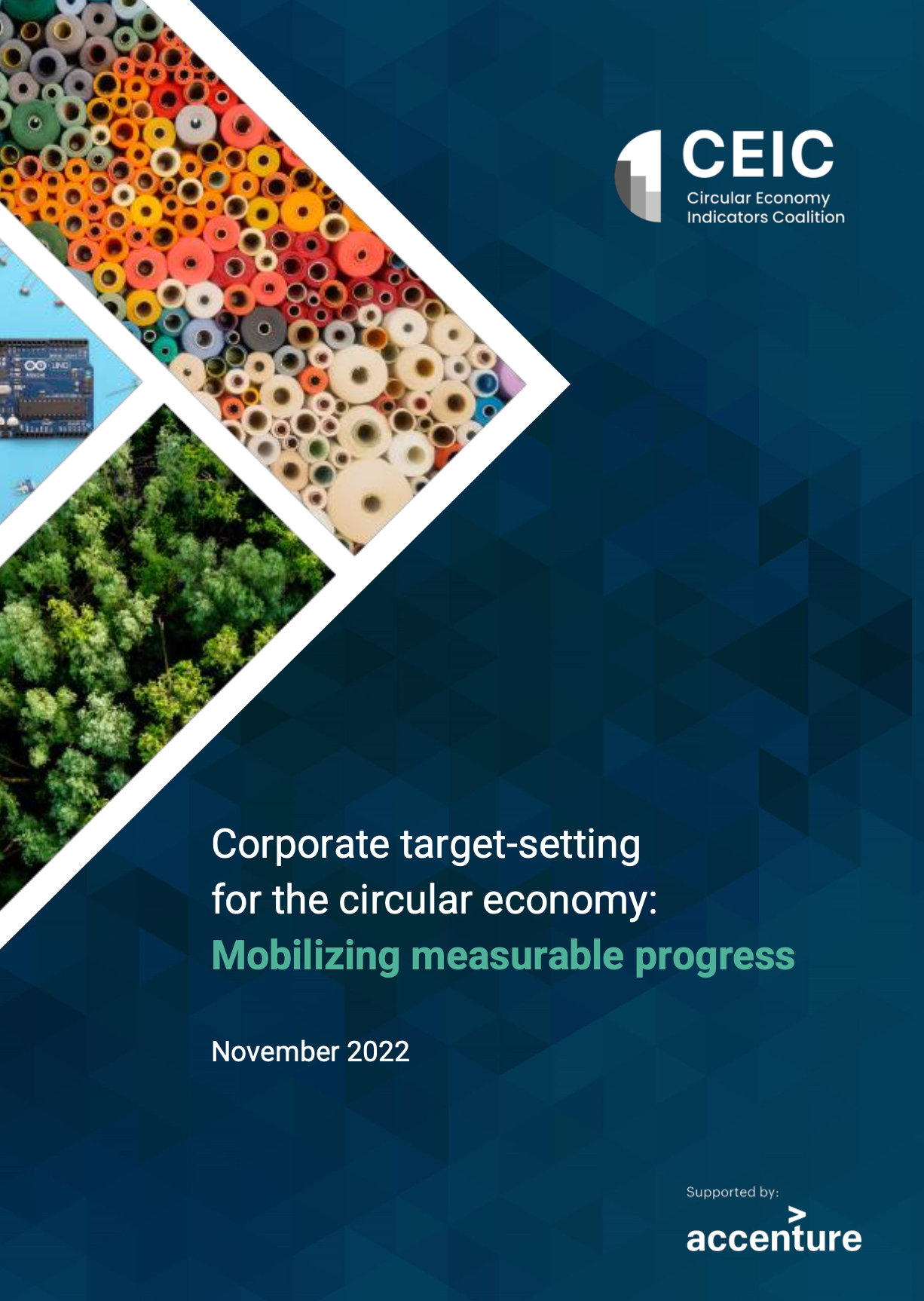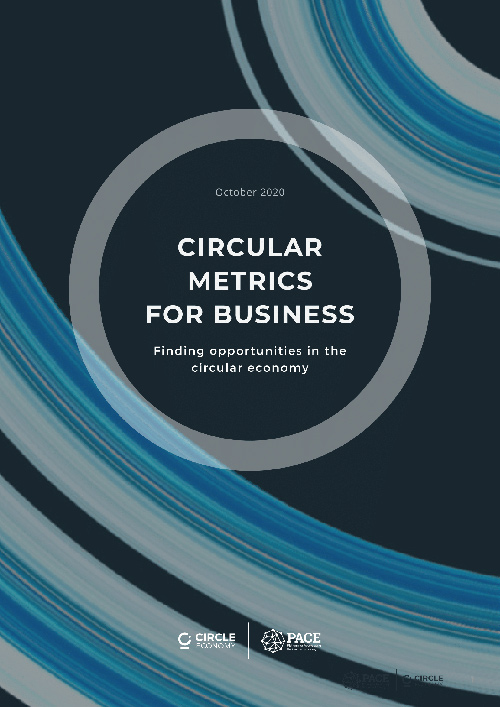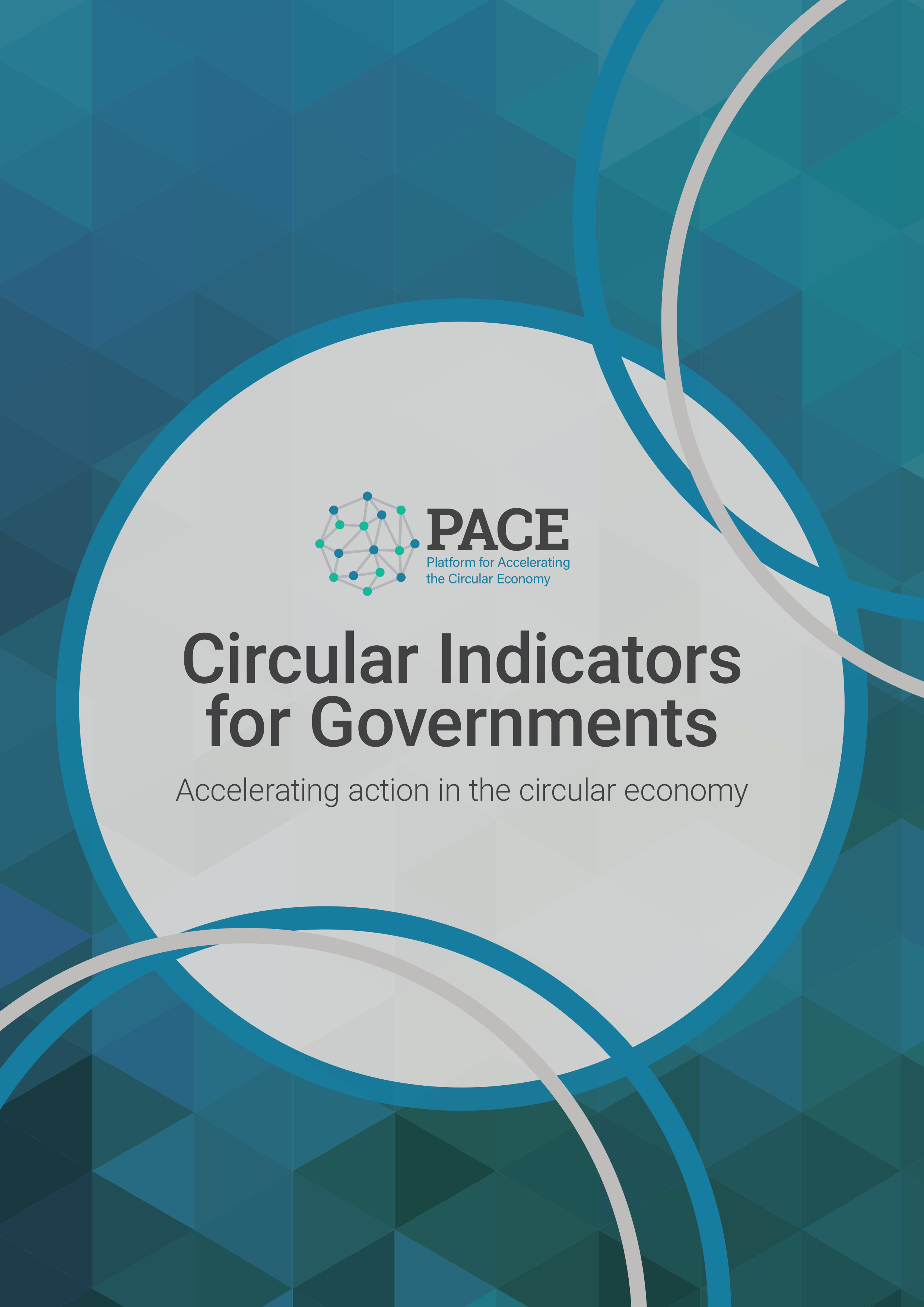Corporate Circular Target-Setting Guidance



Ambition
Enhance corporate circular target-setting by ultimately linking circularity to key environmental outcomes.
Context
The current circular economy target-setting landscape is fragmented, lacking consistent guidance on how to define and implement circular targets, and without this, existing targets are self-defined and difficult to compare, hindering progress without being able to establish the true impact of circular economy business models.
This initiative exists to harness metrics for businesses to support corporate circular target-setting, as a new focus of the Circular Economy Indicators Coalition, in collaboration with Accenture.
We want to enable companies to create quantitative, targeted goals which drive measurable progress toward circularity and help companies navigate existing resources to measure and manage their progress.
At COP27, we released a discussion document, ‘Corporate target-setting for the circular economy: Mobilizing measurable progress,’ which introduces research and consultation findings on the current challenges in setting corporate circular economy targets and presents solutions needed to help mobilize more businesses in setting targets and to help companies better navigate the existing circular target-setting landscape.
At the World Economic Forum in 2023, we released ‘Corporate circular target-setting guidance’, which builds onto the discussion document and provides businesses with a clear launching point for selecting and reporting against impactful targets. It aims to mobilize more corporate circular target-setting and harmonize the circular metrics landscape.
This guidance has consolidated a myriad of materials to point users toward relevant standards, tools, approaches, and methodologies. Businesses can use this guide to learn about best practice KPIs for the circular economy and how to select and set these KPIs.
Do you want to learn more?
We invite companies to get in touch and share their experiences to better guide more impactful targets and to engage in the development of a science-based approach to circular target setting.
Partners
Apple
World Economic Forum
Total Energies
Philips
Anglo American
Systemiq
Zalando
DLL
ENEL
H&M Group
WBCSD
Contact
lotte.holvast@pacecircular.org
Global and national (Austria as the first country)
The Circularity Gap Report provides a metric that measures the circular state of the world economy and high-level insights into the global metabolism. It also identifies key levers for transitioning to circularity at a global level by mid-21st century.
Circle Economy
Contact
lottee.holvast@pacecircular.org


Global
PACE and Circle Economy
Create an overview and provide access to increase the use of meaningful circularity indicators to measure the progress and impact of the circular economy.
Connect key initiatives and stakeholders, including both developers and different user groups of circular economy indicators, to facilitate exchange, improve alignment, and bridge critical gaps.
Our world is only 7.2% circular. Material extraction and carbon emissions continue an upward trend. In terms of sustainability and circularity, the global engine of change is stuck in reverse; we are still heading in the wrong direction. Measuring progress, understanding the current state of play and steering towards the right direction are key when accelerating the circular economy.
However, with a variety of challenges ranging from limitation in indicator coverage to data availability and collection, the circular economy metrics field is still on its way to maturity. For indicators to be successful in supporting stakeholders guiding the transition, they must be consistent, meaningful, widely accepted, and easy to understand. PACE and Circle Economy have established the Circular Economy Indicators Coalition (CEIC) to drive harmonization and increased application of circular indicators.
In October 2020, the Circular Metrics for Business report was released and can be used as a tool to navigate the complex landscape of circularity metrics, by providing a step-by-step guide on which metrics to choose. Businesses can apply metrics to create awareness of the opportunities the circular economy brings to innovate their products among their shareholders, customers, suppliers, and employees.
In April 2021, the CEIC launched the Circular Indicators for Governments report. The report provides an in-depth analysis of public sector indicators and provides opportunities for where action can be taken. Taken together, the reports provide the first clear picture of the current state of play on how businesses and governments are approaching metrics for the circular economy.
The CEIC has created the Circular Indicators Library to help financiers and analysts identify and apply meaningful circular economy indicators. It is an overview of the latest indicators, methodologies and associated resources to measure the circular economy and related social, economic, and environmental impacts. This constantly updated collection is available online at Circle Economy’s Knowledge Hub. The library’s navigation guides users towards indicators most relevant to them through filtering criteria such as target groups or regulations. By regularly accessing the Circular Indicators Library, financiers and businesses can stay up to date with the latest developments in circularity measurement and ensure reliable monitoring of their circular activities. The library was recommended by the United Nations Environment Programme’s report as one of the sources of circularity criteria.
Accenture
Goldschmeding Foundation
Ministry of Infrastructure and Water Management
International Labor Organization
lotte.holvast@pacecircular.org